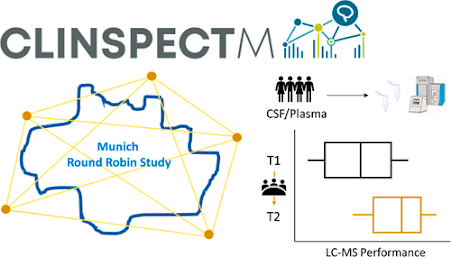I'm, in general, pretty excited any time I see a proteomics study from anyone (except a couple of people - you know who you are) score a bigtime journal and get mainstream media attention.
It doesn't matter if it is a protein microarray or someone who spent 16 years doing western blots or aptamers or whatever. When we're getting past the whole - "we measured transcript abundance over here, so this must be protein levels" that's a big step forward.
This paper, included, but I think it is fair to go back to this and take a look at what they did.
First of all, they did a crap ton of samples. 5,400 plasma samples across multiple cohorts. That's a big freaking study. And they measured nearly 5,000 proteins across these samples by SOMASCAN.
BIG IMPORTANT POINT 1. "Measuring 5,000 proteins" is a funny term to use here and I've recently spent time discussing with some potential investors of a new company doing something similar. When we do global proteomics, we generally don't say we "measured" something unless we detected it with some minimum thresholds of analytical precision, like above this limit of detection or this limit of quantitation or whatever.
What you can do today with some of these new technologies is - apparently - count it if you attempted to measure it. Doesn't mean you did. But you tried, and apparently people out there are fine with that definition. I can't tell if I'm not okay with it (I'm not) or if I'm just jealous that I didn't come up with it first (I'm not).
Still - lot of samples, and they put in aptamers into each sample that could theoretically bind to nearly 5,000 proteins. And - one word - Nature - is fine with that definition of "measuring a protein" so it must be okay now.
BIG IMPORTANT NOTE 2: Let's look at how they identified the "organ specific proteome" - actually - you won't believe me unless I screenshot it -
They went to the GTeX organ project and - they used
transcript abundance as measured in a tissue to define whether that
protein they detected
in plasma was from that organ.
There are multiple assumptions made here and I think we've got to really think about each one.
1) We've assumed that transcript abundance relates linearly to protein abundance. We know it doesn't but I'm less annoyed by the statement above than most transcript-protein things because maybe it isn't that big of a stretch that there probably is more protein A in organ 1 when there is 4x more transcript than in organ 2.
2) We are assuming that the percent release of protein A into plasma is the same in organ 1 and organ 2. And this is a very big assumption. Kidneys and liver have an awful lot of protein exchange due to a huge amount of vasculature and the fact that interacting with body fluids is a requirement of their jobs. Do other organs? I guess there's very little blood flow into some of the damaged areas of my knees because I responded incredibly well (anecdotal evidence, of course) to platelet enriched plasma therapy.
Presumably there is a lot less protein exchange there. Just because there is 4x more protein (ugh...transcript...) in organ 1 does that translate to 4x more protein passing into the blood? I don't know. Maybe the evidence pans out, but it seems pretty unlikely from the little I know from teaching high school anatomy and physiology one year a long time ago.
3) I guess I'm fixated on this whole "organ specificity" because we just find it rare where we find zero evidence of a protein in an organ and we're doing tons of multi-organ drug treatment work. So I would be concerned about a situation where protein A is expressed at a low level in organs 2-15, but as a conglomerate, do they add up to the same amount of plasma protein contribution? This is important because --
BIG IMPORTANT NOTE 3: Aging in an organ here is defined by "we see less of protein A in the plasma of older people".
Whole protein. Not modified protein. Not altered proteoform. Not oxidized protein. Just protein abundance. Now, the impressive part here is that these data do line up with their patient information somehow, but based on the number of assumptions made on the biology side - I find this more than a little surprising and I can't wait to take a look at it myself. And.
Okay - I run into this with collaborators in other fields all the time, particularly at this old medical school where I am now. There is a lab data sharing plan SOP that all collaborators must agree to in order to work with me because proteomics data MUST be made publicly available.
We've been through this a few times - my dog - that article is almost a decade old....
Available upon reasonable request is NOT acceptable. Period. Shame on everyone involved here for this. Reviewers and editor included.
If you're outside of the mainstream proteomics world and reading this, at an ACS journal that statement would be seen typed out and that paper would be rejected instantly.


















































